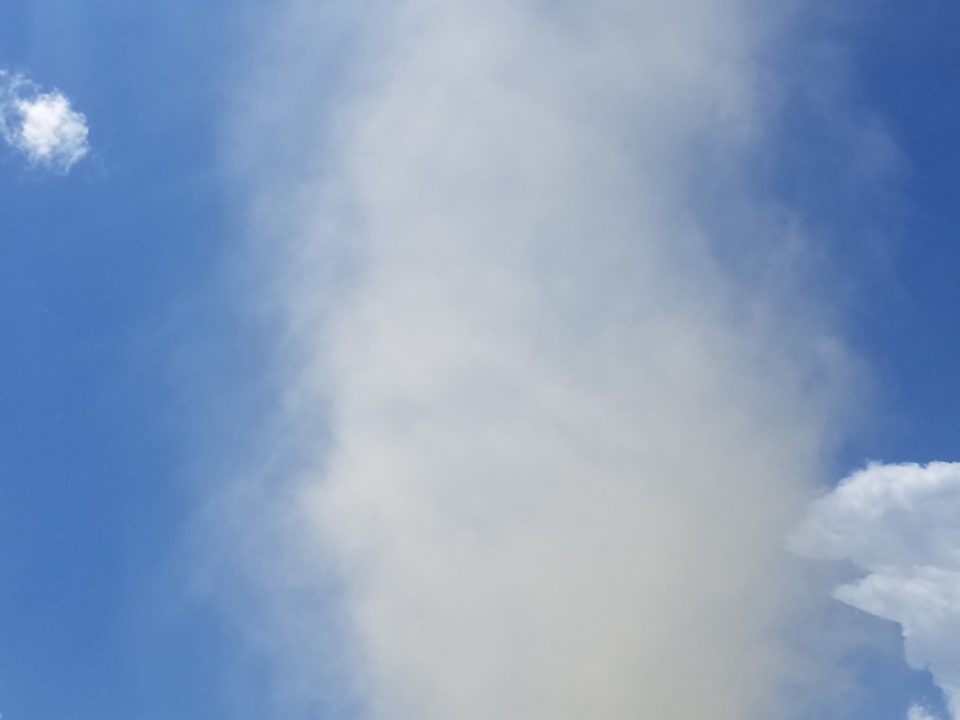Dust Devil Fieldwork #3: Progress

Dust Devil Fieldwork #2: Field Trials
May 10, 2019
Dust Devil Fieldwork #4: Team Paparazzi
June 16, 2019June 12, 2019
This is Part 3 of a series on my dust devil fieldwork in 2019 (see Part 1 | Part 2).
We’re here, we’re really here. I have a team and wonderful instruments and everybody is awesome and working hard. We’re camping on a playa in central Nevada, and I can’t believe we’ve been here for a week now. It took us some time to set up all our gear and get everything working, but I think we’ve got a set routine now.
The team:
Me, the PI, ultimately responsible for All The Things.
Steve Metzger, who set up & manages the weather instruments, organizes our camp, and is mentoring two undergrads who joined us for the campaign. He’s got all the gear and outdoors experience you could want on a field research campaign, plus he specializes in dust devils.
Stephen Scheidt, who set up & manages the cameras that are recording the dust devil activity. He specializes in, well, making stuff, but especially in photogrammetry (that is, how to get 3D information from a scene with cameras). Stephen may well blog about some of the ideas he’s had during this trip.
Taylor Dorn, a grad student at UCLA who’s just starting his studies in aeolian processes. He’s been helpful and curious and will undoubtedly learn something awesome with our data set. Expect to hear more from him.
And our two undergrads, Owen Sprau and Banner Cole, who are helpful and will hopefully look back on this one day as a great summer experience.
So, let’s meet our instruments. I’ve already shown the ceilometer in Part 1, and it’s up and working nicely. It’s captured dusty gust fronts from storms that blew through, rain, clouds, and possibly a dust devil or two. It’s keeping track of the boundary layer height, or at least, it’s trying to do so. Some days the air is clear enough that it’s tough for the li’l guy to see the top of the boundary layer, so we might have to sift through the data later on to see if we can find it with some more rigorous analysis.
What else do we have? Well, we’ve got one heck of a nice weather tower:
It’s got everything! Four cup anemometers (to measure wind speed), four temperature probes (one also measures relative humidity), a pressure sensor, an IR radiometer (to measure ground temperature), a pyranometer (to measure incoming solar radiation, which can be flipped over to measure surface albedo).
Oh, and let’s not forget “Precious”, the claw-shaped eddy covariance instruments placed up at 5 m that not only measure air temperature and wind speed/direction in 3 dimensions, but they do so 20 times per second. Why? To capture the fleeting changes in temperature and wind that are related to turbulence. These relate to how heat and wind momentum are exchanged between the lower atmosphere and the surface, which is thought to relate to the dust devil activity.
We hope to figure out how all of these measurements affect dust devil activity, so that we can better interpret what dust devils on Mars can tell us about what the atmosphere there is doing.
I’ll write more about that soon, when I get a chance. Next time I’ll write about the camera setup we’ve got and show some nice images of the dust devils we’ve been seeing.
Hey, if you’re ever in Austin, Nevada, I recommend the International Cafe as a good place to stop for lunch or dinner (their avocado salad is good). Thanks to them, I’m able to sit and write this up!




